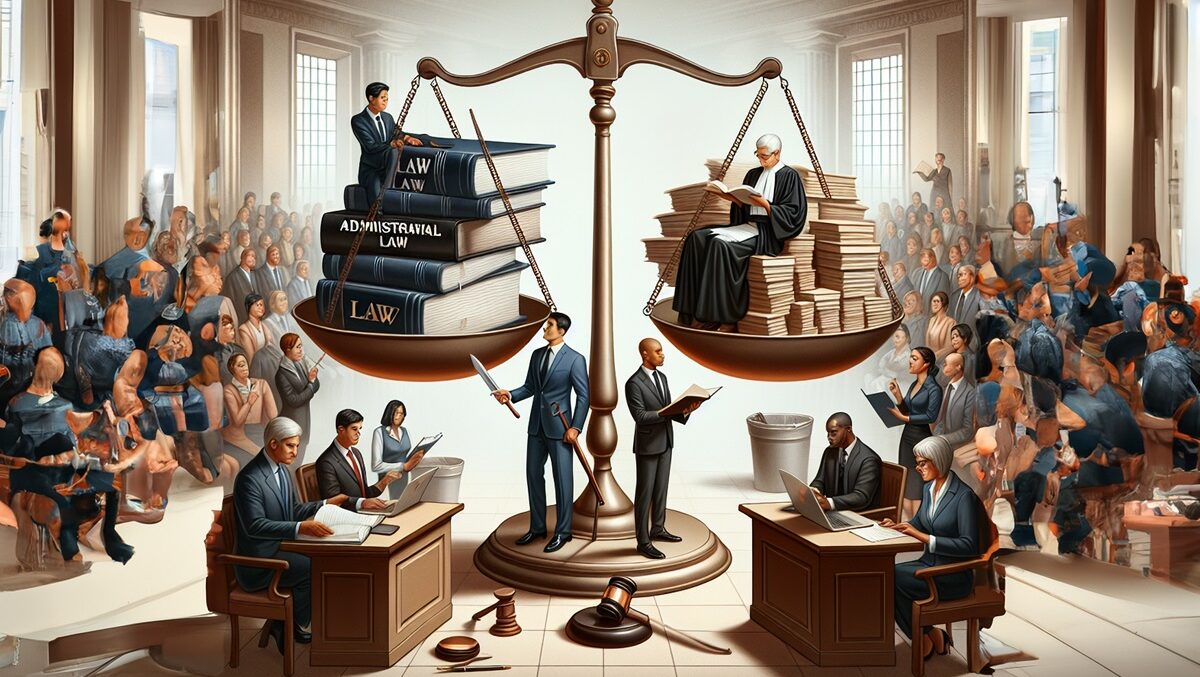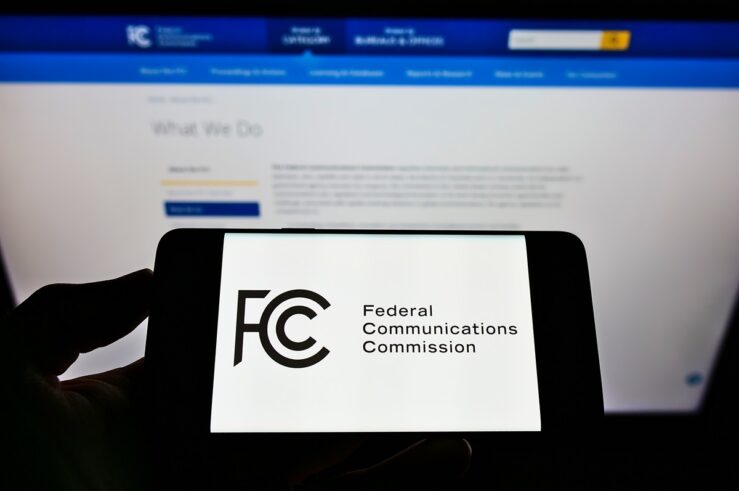
This essay began as a response to claims that the argument that Chevron encourages congressional inaction has been refuted by the best available evidence. That Chevron causes such inaction is one of the arguments made by petitioners in Loper Bright. Leading scholars reject the argument. For instance, Chris Walker has called it one of the “least persuasive points” made at oral argument and Jim Speta has called it “empirically untrue.” Last year, Nicholas Bednar had a very good essay at Notice & Comment arguing that whether Chevron in fact has this effect is an empirical question. He went on to review literature related to (his framing of) this question and concluded by finding that the claim is unsupported and suggesting that its proponents lack candor.
I am one of those proponents. I remember being sad when I read Bednar’s post, and I’ve been consistently frustrated by the dismissiveness I’ve seen toward the argument in the months since Loper Bright was argued. When Jim tweeted that the claim is “empirically untrue” a couple of weeks ago, I reached out to ask what support he had for that assertion; I was worried that I was missing important scholarship on the topic. He offered me a very thoughtful and generous response. It didn’t convince me that the claim is empirically unsupportable, though I do agree that it is currently empirically unsupported in the literature. Regardless, his response prompted me to spend some time on the topic over the past week, leading me to this essay
But this essay is not actually about empirical support for claims about the effects of Chevron on congressional activity. The argument I make here is that we are currently in a period of equilibrium adjustment in administrative law, returning to the equilibrium relationship between Congress and the executive that existed before the adoption of our current formalist understanding of the separation of powers isolated those two branches and ushered in the era of presidential administration.
I’ll look at this in three parts. First, I flesh out in more detail the empirical question of whether Chevron causes congressional inaction. I then build on this to argue in the second part that this actually is not an answerable empirical question, which is not unusual. Both before and after Chadha’s invalidation of the legislative veto, for instance, there were similar efforts to quantify that decision’s effects empirically. But those efforts provided more mystery than answer. The legislative veto was only rarely used when it was allowed; it served more to signal congressional goals and to structure the relationship between Congress and the agencies than as the specific mechanism by which Congress directed agency action. And third, I introduce the (entirely non-empirical!) argument that administrative law is in a period of equilibrium readjustment, to restore the pre-formalist separation-of-powers relationship among Congress, the agencies, and the president.
Defining the Question
I will start by defining–or clarifying or redefining–the question. As Bednar notes, the Loper Bright petitioners’ merits brief raises the concern that:
Chevron has seriously distorted how the political branches operate. Thanks to Chevron, Congress does far less than the Framers envisioned and the executive branch does far more, as roughly half of Congress can count on friends in the executive branch to tackle controversial issues via executive action without the need for compromise, bicameralism, or presentment. [emphasis added]
The first portion of the italicized text suggests that the question—and petitioners’ concern—is that Chevron has caused Congress to do less legislating, and the second portion suggests the analogous concern that the executive branch is doing more. We see this understanding in Bednar’s essay, which argues that:
For these claims to be true … congressional productivity must have decreased post-Chevron … and Congress must have increased delegation to the executive branch post-Chevron.
But this mischaracterizes the petitioners’ concern in Loper Bright. The concern is not the amount of activity between the branches, but the substance of that activity. As the petitioners’ merits brief says in the very next sentence, the problem is the creation of “a dynamic where the ‘law’ on important and divisive issues changes radically with every change of administration.” (One could say something about the candor of omitting a sentence like this from the quote above!) Assuming that many pre-Chevron statutes contained substantial ambiguity (which is undoubtedly the case), and that post-Chevron congressional activity doesn’t wrest control away from the executive branch (it hasn’t; and, even if Congress wanted to, such an effort would face the threat of an executive veto), neither of Bednar’s suggested criteria is necessary for the petitioners’ actual, expressed concern to be valid.
This focus on substance over amount is reflected in others’ understandings of the case, as well. I was a co-author of one of the amicus briefs filed in the case. As we argued there, “Chevron effectively allows, and indeed encourages, Congress to abdicate its role as the most politically-accountable branch by deferring politically-difficult questions to agencies in ambiguous terms.” And as John McGinnis and Michael Rappaport recently argued, “Allowing each new administration to use Chevron to flip-flop interpretations of statutes permits partisans to wait for a President of their liking to deliver their party’s uncompromising position.”
Indeed, rather than compromise, legislators can campaign on the promise of adopting preferred policies and use delegations of authority to take credit for successes and blame their opposition for failures. This argument is far from new, though in the wake of the “Contract with America” and the Tea-Party era, many members of Congress may have incentives more starkly aligned with this cynical strategy.
I have zero doubt as to the empirical validity of this claim, though I concede no sense of its magnitude: I lived through the net-neutrality wars in the 2010s. During the 2014 midterms, I was told by many staffers on the Hill that their bosses would not support compromise net-neutrality legislation because it was too good an issue for them to campaign on. No matter what the Federal Communications Commission (FCC) and courts did, it would benefit their campaigns. The worst outcome (from this political-strategy perspective) would have been for Congress to adopt any compromise legislation.
Of course, scattered data points such as these do not demonstrate a trend or broader phenomenon. But I would argue, thinking in positive political theory terms, that this phenomenon demonstrates an expansion of the gridlock zone. On the margin, legislators have less need to (or, what is the same thing, have less to gain from) compromise. Thus, on issues that require compromise, we should expect to see less legislative activity; this will be most true on the most politically controversial topics. The analytical question is, by how much does the size of the gridlock zone increase? And, perhaps, in what direction? More on that in the next part of the discussion.
Astute readers will see that the question, as defined above, is quite a bit different than the sensational “Should the Court overrule Chevron?” framing more typically debated. Indeed, while the brief I participated in was nominally in favor of the petitioners, in hindsight, I would have rather submitted it in favor of neither party. The real concern that I—and, I expect, the petitioners—have is that agencies are largely free to change interpretations of ambiguous statutes between administrations. Regulatory stare decisis—under which a prior administrative interpretation of an ambiguous statute is binding on future administrations under terms similar to those by which precedent is binding upon courts—would resolve these concerns nearly completely. Such an outcome would respond to the second part of the question before the court, “clarify[ing] whether statutory silence on controversial powers creates an ambiguity requiring deference to the agency.” And, of course, it would not entail “overruling” Chevron.
Denying the Question
There are two schools of thought one will encounter regarding how Frank Herbert thought about the original “Dune” trilogy. The first is that he cared most about the first and third books, with the second largely serving as a bridge between them. The second is that he cared most about the first two books, with the third finishing up storylines and setting up future books. In this essay, this second part is largely a bridge between the first and third parts. That isn’t to say that it is unimportant. Rather, it explains how I get from the framing discussion in the first section to the third section, which offers the essay’s main argument. (So bear with me.)
I have spent the last several months working on a project with my International Center for Law & Economics (ICLE) colleague Geoff Manne that considers how regulation can serve as a discovery process (draft here; substantially revised version coming soon; comments welcome!). As part of this project, I have spent a fair bit of time with Chadha, especially Justice Byron White’s dissent. I have always been sympathetic to formalist separation-of-powers arguments, but I have of late come to be persuaded that it has cost Congress a beneficial role in the operation of the agencies that it creates.
The immediate relevance of Chadha, however, is that while it presented a seemingly straightforward empirical question, efforts to study it analytically haven’t yielded clear results. This, in turn, has left me doubtful that we will actually be able to answer the question of whether Chevron affects the likelihood that Congress will address controversial legislative issues, beyond rough heuristics or sentiments that it may embiggen the gridlock zone by some amount.
I should say that this is not meant to dismiss the importance or relevance of empirical work. Legal scholarship sorely lacks in empirical work, and the increasing incidence of such work across many fields is unquestionably for the good. But we study complex phenomena in dynamic settings; often, our subjects are wicked problems. Where possible, empirical work should be part of the conversation.
But it is often not possible. And even where it is, it is only ever just part of the conversation. The discussion above demonstrates this: Bednar defined the empirical question raised by petitioners in one way and brought good data to bear in answering it. But that likely was not the question that petitioners were actually raising. It certainly was not the only relevant question, and other formulations of the question (dealing with the substance or quality of legislation, not merely the amount) are not so amenable to empirical analysis.
Returning to Chadha, which both presents a similar example of these concerns and has reshaped how I am thinking about Chevron: To refresh memories, in Chadha, the Court held that legislative vetoes are unconstitutional. Congress passes a law, after which point the president executes it. A legislative veto reserves for Congress some say in the execution of the laws that it writes. The only way for Congress to alter the execution of an enacted statute is for it to go through the entirety of the Constitution’s legislative process again, with bicameralism and presentment.
In dissent, Justice White famously expressed concern that:
Without the legislative veto, Congress is faced with a Hobson’s choice: either to refrain from delegating the necessary authority, leaving itself with a hopeless task of writing laws with the requisite specificity to cover endless special circumstances across the entire policy landscape, or, in the alternative, to abdicate its lawmaking function to the Executive Branch and independent agencies.
If the legislative veto is as important as scholars think it is, one would expect that we should be able to find evidence of changed legislative behavior before and after Chadha. But this has proven unavailing. Before Chadha, legislative vetoes were common in legislation but only rarely used in practice. Even after Chadha, Congress has still sometimes included legislative vetoes in legislation. Indeed, according to Louis Fisher, Congress has continued to frequently include legislative vetoes or legislative-veto-like provisions in congressional acts, or created them through informal agreements with executive agencies.
Studies by Joel Aberbach (1990), Martha Gibson (1992), and Jessica Korn (1996) add more contour to this. These studies find, among other things, that pre-Chadha, the legislative veto was among the least-effective or used oversight tools, falling far behind such other tools as informal communications and oversight hearings. In the years leading up to Chadha, Congress was already making increasing use of report-and-wait legislation. This trend continued following Chadha, with many veto provisions being replaced with report-and-wait requirements. Where there was sufficient will to exercise a veto—which usually required more than a bare minimum of support—Congress had the will to enact legislation directly and put the matter before the president.
Gibson suggests that, if anything changed the locus of conflict between Congress and the president, it was moving it from backrooms in which the president sought to gain the favor of a veto-wielding Congress to a public forum in which members of Congress sought to gain favor of a veto-proof executive. Fisher, by contrast, suggests that “One effect of Chadha has been to drive some legislative vetoes underground, where they operate on the basis of informal and non-statutory understandings.”
There are two lessons to take away from Chadha. First, it is dangerous to over-rely on empirical assessments of how—or even whether—the case affected congressional activity. That doesn’t mean the effort is not important or informative, but we need to be realistic about the level of precision we can expect. Nearly all data will come from underpowered, small-N surveys of interested parties filtered through a post-hoc lens, without the benefit of controls and subject to boundless confounding factors.
We see this, as well, in the Chevron context. Are we talking about its effects on all congressional activity or just that involving controversial issues (how do we define such issues)? Are we focused only on post-Chevron legislation, or pre-Chevron legislation? We assume that Chevron is, in fact, important; but what if it turns out that (as many suggest) the but-for world without Chevron looks quite a bit like the world with Chevron? How do we compare pre- and post-treatment worlds if we don’t even understand the pre-treatment world?
The second lesson is perhaps more important: when you upset an existing equilibrium, things shift around to establish a new equilibrium. Some things did change following Chadha. The default rule in fights between Congress and the president changed, which altered the balance of power and locus of debates between the two. We likely saw increased reliance by Congress on fire alarms, along with the use of blunter regulatory tools, such as appropriations bills. And because the cost of using blunter tools and engaging in more public fights was greater compared to the (implied or actual) use of the legislative veto, we saw a shift of regulatory costs back onto agencies through tools like report-and-wait and the Congressional Review Act.
An Equilibrium-Adjustment Theory of Current Trends in Administrative Law
When I started working on this essay, it was meant to be a response to claims that the idea that Chevron has increased congressional inaction has been rebutted. But I have ended up with a far broader thesis: that the adoption of a formalist separation-of-powers understanding of the Constitution disrupted a stable equilibrium under which the three branches governed effectively together. The shifts in administrative law in recent decades have occurred as the branches find a new, post-formalist separation-of-powers equilibrium that similarly allows them to govern effectively together. This puts the dramatic shifts in administrative law that we have seen—roughly since Chief Justice John Roberts’ dissent in City of Arlington—in a different light than when we view the various issues separately.
The Pre-Chadha Equilibrium
Today, Chevron is a case and cause unto itself. It has commanded a central role in administrative-law classrooms for multiple decades in a way that no other case has; it is the singular focus of administrative-law scholarship; and it is among the most cited cases in American jurisprudence.
But thinking about it alongside Chadha places it in a different light: as much as anything, Chevron is about the formalist separation-of-powers revolution that started in the 1970s with Nixon and Buckley and became the de rigeur understanding in the 1980s with cases like Chadha, Bowsher, and Morrison.
It is noteworthy, and curious, that Chevron is not generally listed or taught among the great separation-of-powers cases. But those cases are generally about the relationship between Congress and the president; Chevron’s focus is generally seen as being on the relationship between the judiciary and the president. And, practically speaking, the greater importance of studying Chevron is to understand its application. What is said practically often (practically speaking) reveals the truth of certain matters.
As Justice White said in his Chadha dissent, “the history of the separation of powers doctrine is also a history of accommodation and practicality. . . . . The Constitution does not contemplate total separation of the three branches of Government. A hermetic sealing off of the three branches of Government from one another would preclude the establishment of a Nation capable of governing itself effectively.” (cleaned up) This echoes Justice Robert Jackson’s Youngstown concurrence:
The actual art of governing under our Constitution does not and cannot conform to judicial definitions of the power of any of its branches based on isolated clauses or even single Articles torn from context. While the Constitution diffuses power the better to secure liberty, it also contemplates that practice will integrate the dispersed powers into a workable government.
The Jackson concurrence in Youngstown is the best known, but Justice Felix Frankfurter frames the point in a slightly different way, emphasizing that:
The Constitution is a framework for government. Therefore, the way the framework has consistently operated fairly establishes that it has operated according to its true nature. . . . It is an inadmissibly narrow conception of American constitutional law to confine it to the words of the Constitution and to disregard the gloss which life has written upon them.
In the pre-Chadha/pre-Chevron era, Congress was able to play a more direct role in how the other branches implemented its policy directives. At times, this included the use of formal mechanisms like the legislative veto. But the legislative veto also reflected prevailing understandings of the relative roles of the coordinate branches: namely, that Congress bore primary responsibility, and had primary authority, to chart the policies of the federal government through legislation.
Importantly, I would argue, this manner of operation reflected the necessary practicalities of government. Lacking the ability to have some level of ongoing say in how its laws are interpreted, Congress faces what Justice White called a Hobson’s Choice: “either to refrain from delegating the necessary authority, leaving itself with a hopeless task of writing laws with the requisite specificity to cover endless special circumstances across the entire policy landscape, or, in the alternative, to abdicate its lawmaking function to the Executive Branch and independent agencies.”
Chadha and Chevron were a doubly-whammy of disruption to this equilibrium. Chadha changed the default rule in conflicts between Congress and the president from one favoring Congress to one favoring the president. Chevron changed the default rule in conflicts between the courts and the president from one favoring judicial interpretation of ambiguous laws to one favoring executive interpretations.
But changing the default rule does not mean forbidding transactions. It may mean altering exactly what those deals look like, but Justice White’s “accommodation and practicality” remain. As Fisher puts it: “The meaning of constitutional law in this area is evidently determined more by pragmatic agreements hammered out between the elected branches than by doctrines announced by the Supreme Court.”
Restoring the Pre-Chadha Equilibrium
What we have been seeing in the years since is a natural process of re-equilibration back to a stable status quo. If we take the formalist separation of powers as nominally binding, several things follow. First, as noted, some allocation of powers between the branches simply “goes underground” and takes the form of less formal (and thus not explicitly prohibited) arrangements.
But at the same time, much of the locus of change is in the role of independent agencies. As then-professor Elena Kagan argued in “Presidential Administration,” the Clinton administration saw an increased centralization of the president’s power to direct government policy. It is no accident that this occurred in the post-Chadha years. If Congress has less ability to fine-tune the activities of agencies, another branch must take up that mantle, and greater presidential ability to exert that authority is a natural solution. Thus, e.g., we see challenges to for-cause removal protections.
Similarly, we are currently seeing a re-evaluation of independent agencies’ quasi-authorities. Quasi-legislative authority has long been understood to mean the power to issue legally binding rules; quasi-judicial authority has long been understood to adjudicate cases subject only to relatively modest Due Process protections. Cases like Kokesh and Cochran have begun to dial back the scope of the quasi-judicial authority, requiring agencies to bring their actions before the judiciary if they want to secure civil damages. Jarkesy might see further reassertion of traditional judicial authority, to fill the void created by weakened congressional oversight of how agencies execute their legislative authority.
Jarkesy also might continue the work begun in cases like Axon to dial back the scope of independent agencies’ quasi-legislative authority. Looking back to the Court’s discussion in Humphrey’s Executor, the Court moored the agency’s quasi-legislative authority to the role that the agency played in advising Congress, not to its authority to make its own rules independent of Congress:
In administering the provisions of the [FTC Act] . . . the commission acts in part quasi-legislatively and in part quasi-judicially. In making investigations and reports thereon for the information of Congress under section 6, in aid of the legislative power, it acts as a legislative agency.
The legislative process is a burdensome one. Where Congress and the agencies work closely together, whether formally or informally, allowing agencies the power to make legally binding rules is a reasonable expedience. But that expedience becomes harder to justify the less control Congress has over an agency’s output. In an era of formalist separation-of-powers constraints, it would not be surprising to see the Court return to a more restricted understanding of quasi-legislative authority, under which the role of the agency is to report to and advise Congress on the laws that it should adopt. Indeed, this mirrors rather precisely the change that we have seen post-Chadha from reliance on the legislative veto to reliance on report-and-wait statutes.
And, of course, we see something similar with Chevron. Here, the separation-of-powers issues are different: Chevron relates principally to the relationship between the judiciary and the president. As a practical matter—as many, many others have argued—there will always need to be some form of deference rule for the interpretation of ambiguous statutes. The idea of “eliminating Chevron” is, in that sense, deeply flawed. And the expertise and congressional-intent grounds supporting Chevron’s rule favoring executive over judicial interpretations of statutes are compelling.
But there is a significant penumbra surrounding the scope of this deference. As discussed above, the real concern is that Chevron has shifted the burden of changing problematic interpretations of statutes from Congress to the president. Prior to Chadha and Chevron, and as affirmed contemporaneously with them in State Farm, the basic rule was that agencies were free to change rules implementing statutes subject to the same standard governing adoption of the previously adopted rules.
Here, again, that rule made more sense in an era of greater congressional engagement with agencies than is possible in a formalist separation-of-powers world. It makes more sense today to subject executive interpretations of ambiguous statutes to the same standard that we would see in the judicial context. That is, agency interpretations of legislation (undertaken in their quasi-judicial capacity) should carry a precedential effect similar to questions of law decided by circuit courts.
For instance, we could treat them as governed by stare decisis, as I suggested above with the idea of regulatory stare decisis. Or, perhaps, we could treat changed interpretations as a circuit split: tasking reviewing courts with choosing among competing interpretations without any preference given to any one, and with that interpretation then carrying the weight of judicial precedent. In either case, the result would be the same: Chevron would apply to agencies’ interpretations of ambiguous and previously un-interpreted laws. That initial interpretation of an ambiguous law, however, could be reversed only on grounds similar to those that govern stare decisis, or by Congress itself.
A similar analysis applies with the major questions doctrine (MQD). In the pre-Chadha world, Congress and agencies could work together to ensure that broad delegations of power were used in ways compatible with legislative priorities. Here, the threat of legislative veto lingered large in the background.
An illustrative example can be found with the history of the Federal Trade Commission (FTC) in the 1970s. At the time, the FTC Act did not contain a legislative veto, but the FTC’s authority to issue substantive competition rules was uncertain and unused. In the 1970s, the FTC began to issue aggressive competition and consumer-protection rules. The result, as I have recently discussed, was for the FTC first to impose a variation of a report-and-wait requirement on consumer-protection rules. After the FTC continued to implement aggressive rules, Congress invalidated all recent FTC rules in a continuing resolution and then imposed a legislative veto on agency rulemaking. Clearly, Congress viewed the legislative veto as part of its toolbox to ensure the broad delegation of authority to the FTC was used in a way compatible with congressional priorities.
One understanding of the MQD is that it is a tool by which the Court is channeling executive interpretation of important legislation back to Congress, re-establishing an equilibrium between those two branches to something more closely resembling that which existed in the pre-formalist separation-of-powers world.
Conclusion
Individuals organize their activity around the rules of the institutions in which they participate. Moving the three-point line in basketball benefits either the offense or defense and will lead to changes in how every player on the field plays. Small changes in the rules of criminal practice will affect what cases get prosecuted, what charges are brought, who in society might be arrested, and ultimately what laws are enforced. Increasing or decreasing transaction costs changes behavior.
We should expect to see the same in the administrative state. Changing the relationship among the coordinate branches of government by introducing a strict separation of powers among them will alter how each of them interacts with the others. But there is also an adjustment period. Moving the three-point line will lead to years of disruption, as teams learn how best to perform under the new rules. And importantly, the new equilibrium, once achieved, may or may not be better than the previous one.
This is just a quick essay: I concede it is incomplete and does not engage with counter-arguments. I had initially used the example of shrinking the strike zone in baseball instead of moving the three-point line in basketball. But I changed this at the behest of a colleague who noted that the role of the umpire in changing the size of the strike zone messies the analysis.
My analysis above treats the Court as a neutral arbiter—a debatable view, indeed! One can defend Chevron as an exercise in judicial humility and recent changes as an exercise in judicial aggrandizement; the story I tell above views the Court as having abdicated its role to maintain the balance of powers between the branches, as Chevron and Chadha shifted powers from Congress to the president. Both of these views can be true, and likely are to varying degrees. For now, I will note only that my goal has been to put forth the equilibrium adjustment-theory as a possibility, not to ventilate all the issues surrounding it.
There were virtues in how the administrative state operated prior to Chadha and Chevron, some of which were lost as we entered into the formalist separation-of-powers era. There were certainly vices, as well; this is not meant to be a Panglossian account of how times used to be better. I believe that much of the retrenchment we have seen in administrative law over the past decade or so is part of a natural process of finding a stable equilibrium around a changed set of institutional rules.




